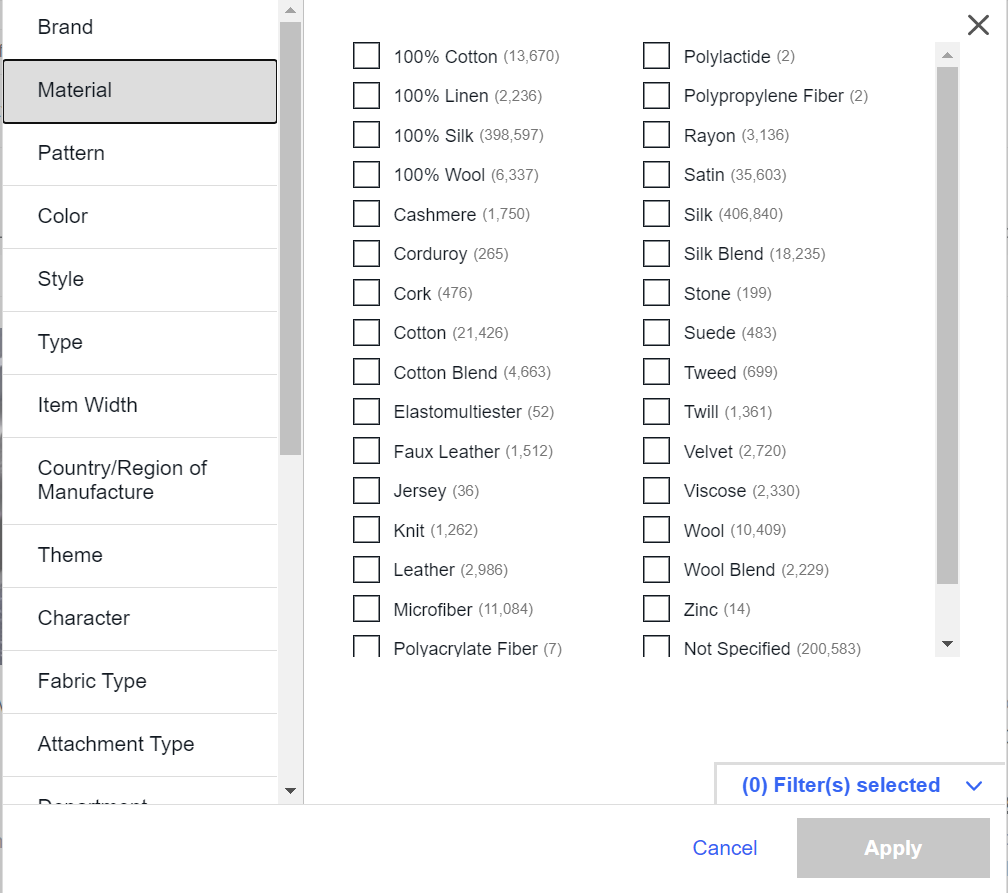Who controls the marketplace navigation infrastructure

The question of who controls the marketplace navigation is important. Giving the sellers complete freedom in deciding which attributes and values to use creates a large amount of data, which most often leads to redundancies, which hurt the user experience.
Site navigation is a significant part of an online store’s user experience. It allows customers to refine the results according to parameters of their choosing, and make the shopping experience much more simple and efficient. Site navigation put an end to hours of browsing through thousands of products, while trying to make order of things. It brings customers straight to where they want to go.
In order for site navigation to work properly and ensure a good user experience, all the products sold in the store should be tagged with the attributes and values that best describe it. For example, blue suede shoes should be tagged with the values “Blue”, “Suede”, and you better tag it with the size as well, since this is one of the most used attributes.
Since site navigation requires plenty of data infrastructure, a question arises: Who controls the marketplace navigation? Who should be responsible for the data infrastructure ‒ the seller or the marketplace? Each of the two options have both pros and cons, and in this article we will try to determine where the responsibility for the data infrastructure should rest.
The first option is to allow sellers to tag their products with their own attributes and values. For sellers, this is their favorite option, since it gives them complete freedom over how they describe their products. It also gives them room for creativity and a chance to stand out by offering novel values and unique attributes. In fact, they can get so specific, to the point of losing relevance on expense of standing out.
This poses a problem to the marketplace, however. Giving the sellers complete freedom in deciding which attributes and values to use creates a large amount of data, which most often leads to redundancies, which hurt the user experience.

When looking to buy a necktie on Ebay, one important attribute is the material. But when browsing through the values, we immediately see double: there are both “100% Cotton” and just “cotton”. The same goes to wool, with “100% Wool” and “Wool”, and more. And this is just one attribute. This is definitely not the sign of a well structured data infrastructure.
When customers go select the preferred values, seeing several almost identical options only confuses them. If a customer wants to buy a cotton tie, which value should he choose? This moment’s hesitation has a significant impact on user experience. Having multiple redundancies across the site also seriously diminishes SEO’s efficacy, as many products get lost due to these variances on the same value.
In the second option, the marketplace has all the power. It provides sellers with a pre-determined set of attributes and values, and the seller has no say in the matter. Their products must fall within the attributes and values provided by the marketplace. This way, the marketplace completely avoids redundancies in values, since it has total control of what goes in them.
The down side to this option is that it completely curbs the sellers’ creativity and put all the responsibility for the discovery of new values on the shoulders of the marketplace’s content team.. Too much creativity can lead to redundancies, as we have seen, but allowing some encourages innovations and helps discover new values that may be relevant to customers. In order to provide customers with the best user experience possible, the marketplace has to know what they are looking for. Sellers’ input is a good source of knowledge for such information.
Thus, the best solution seems to be somewhere in the middle. While the answer to the question who controls the marketplace navigation is definitely - the marketplace, it is important to integrate the data supplied by the sellers within it.
In order to avoid redundancies and confusion, the marketplace should not allow sellers to add attributes and values by themselves. Instead, the market should control the site navigation infrastructure, and is therefore also responsible for tagging the products with the attributes and values it decided to offer. The sellers, however, should be given the freedom to suggest their own attributes and values. The marketplace should treat this information as a valuable source to finding out what the latest trends are, and what the customers are looking for.



